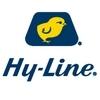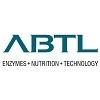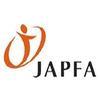Check out what is new in Poultry Industry
Find the best technical articles, forums, and videos on Poultry Industry at Engormix. Enter now and interact with the world's largest agricultural social network.
1. Introduction Recent trends in food animal production emphasize reducing antibiotic use due to the growing threat of antimicrobial-resistant bacteria [1,2]. Consequently, there is a critical need for sustainable alternatives that promote growth and health while maintaining production efficiency. Phytobiotics are plant-derived compounds that have emerged as promising candidates for this role [3]. Unlike antibiotics, phytobiotics do not contribute to antimicrobial resistance or...
Comments : 0
Recommendations: 1
1. Introduction Intestinal health is a crucial parameter in ensuring the health of birds and the optimal use of nutrients because of its various functions, namely the digestion and absorption of nutrients, the secretion of mucins and immunoglobulins, and selective protection against pathogens [1]. This topic has gained even more interest in poultry production because of increasing demands for economic efficiency, animal welfare, food safety, reducing environmental impact, and...
Comments : 0
Recommendations: 1
.jpg&w=3840&q=75)

Introducing Afla-V ONE: Fast, precise aflatoxin detection for complete feeds and pet foods
Suggested link
1. Introduction Broiler chicken feed represents approximately 75% of production costs, a figure that is expected to increase due to the commodity nature of animal feed ingredients, especially soybean oil, a primary raw material in feed production [1,2]. Currently, there are few alternative energy sources to soybean oil available for reducing production costs in poultry farming. Given these challenges, there is a growing need to explore alternative energy sources in broiler...
Comments : 2
Recommendations: 0
1. Introduction The misuse and overuse of antibiotics in humans and livestock animals are primary drivers of antimicrobial resistance [1,2], which is projected to become the leading cause of global human mortality by 2050 [1]. Consequently, the subtherapeutic use of medically important antibiotics for growth promotion and disease prevention in livestock has been banned in an increasing number of countries; however, this ban has inadvertently increased the risk of infections in...
Comments : 0
Recommendations: 2
1. Introduction Eggs and meat from poultry are indispensable protein sources in people's meals in Bangladesh [1]. However, the advancement in the poultry production is often interrupted by the overwhelming occurrence of infectious diseases in low resource settings of developing countries such as Bangladesh. Occurrence of these diseases, which incur a colossal loss due to less production of a quality product and also from the treatment cost, are attributable to noncompliance...
Comments : 0
Recommendations: 0
1. Introduction Influenza A virus (IAV) is an enveloped RNA virus, a member of the Orthomyxoviri dae family, and is known to infect humans, mammals, and birds [1]. The virus is subtyped based on the antigenic cross-reactivity and sequence identity of two surface glycoproteins, namely, hemagglutinin (HA) and neuraminidase (NA) [2]. Excluding the recently identified H17N10 and H18N11 in bats, 16 HA and 9NAIAV subtypes have been identified in mammals and birds to date...
Comments : 1
Recommendations: 1
1. Introduction Welfare assessment in animals has increasingly emphasized the need for objective, non-invasive measures that reliably reflect physiological and psychological states [1–4]. In this context, pupillometry (the measurement of pupil dynamics) has gained traction as a valuable tool, particularly in human psychological and neurological research [5,6]. The pupil’s diameter is known to change in response to a variety of internal and external stimuli, including...
Comments : 0
Recommendations: 0
Featured comment:
I think other factors play a role, eg. - Overcrowding - Wet litter - Mycotoxins - Bad ventilation - Genetic factors - Overuse of some chemicals ...
Comments : 9
Recommendations: 0
.jpg&w=3840&q=75)
Jose J. Bruzual (Senior Poultry Veterinarian, Aviagen) comments on the benefits of this grading method and its relevance to the poultry industry in this Engormix interview. ...
Comments : 1
Recommendations: 1
The 37th Annual Australian Poultry Science Symposium will take place from February 9th to 11th, 2026.
Planning is coming along nicely for APSS2026, and we have nine excellent invited speakers who are all very excited to be involved in the symposium next...
Comments : 0
Recommendations: 1
.jpg&w=3840&q=75)
Janjaap Van der Mark, Director of Global Environmental Solutions at Big Dutchman, shares key strategies for turning waste into value, reducing environmental impact, and driving sustainability in modern farming. ...
Comments : 0
Recommendations: 1
.jpg&w=3840&q=75)
Andrew Gomer, Senior Business Development Advisor at Nova-Tech Poultry, discusses the company’s advanced technologies that support sustainable egg production. ...
Comments : 0
Recommendations: 1
.jpg&w=3840&q=75)
Dr. Luke Kramer, Geneticist at Hy-Line International, explores how targeted genetic selection can improve both the production performance and overall welfare of Hy-Line White laying hens. ...
Comments : 0
Recommendations: 2
.jpg&w=3840&q=75)
Dr. Chandrasekaran discusses the challenges facing poultry production in India, including managing depletion rates and raw material contamination. He stresses the importance of adopting proactive approaches and standardized procedures to ensure consistent, high-quality production and support India’s growth in the global poultry industry....
Comments : 1
Recommendations: 1
.jpg&w=3840&q=75)
Dr. Ajimul, a veterinarian with 15+ years of experience, highlights Bangladesh's rapidly growing poultry sector, producing 24 billion eggs and 1.5 million metric tons of meat annually. With rising demand for protein, the industry is set to double production in the next decade....
Comments : 0
Recommendations: 1
.jpg&w=3840&q=75)
Dr. Sachin Patil, DGM - Key Clients at Huvepharma, discusses strategies to prevent coccidiosis in poultry through coccidiostats and innovative vaccines. He highlights Huvepharma’s latest solutions, including hatchery-level vaccines, to boost gut health and performance in broilers, layers, and breeders....
Comments : 0
Recommendations: 1
.jpg&w=3840&q=75)
April Santos (Evonik Animal Nutrition) explains how tributyrin, a form of butyric acid, enhances gut integrity, immune function, and nutrient absorption in poultry. Learn how this solution replaces antibiotic growth promoters for a more sustainable and safe food future....
Comments : 1
Recommendations: 1
I. INTRODUCTION Modern broilers grow 5 times faster on 40% less feed than they did 60 years ago (Zuidhof et al., 2014). Because high body weight (BW) correlates negatively with reproduction and health (Decuypere et al., 2010), the severity of broiler breeder feed restriction increases every year relative to broiler growth potential. This intensifies competition for feed, resulting in unequal distribution of feed and poor flock uniformity. Achieving and maintaining high flock...
Comments : 0
Recommendations: 0
.jpg&w=3840&q=75)

Introducing Afla-V ONE: Fast, precise aflatoxin detection for complete feeds and pet foods
Suggested link
I. INTRODUCTION Whole grain feeding (WGF) involves the partial substitution of ground grain with whole grain in boiler diets. Whole grain (WG), usually wheat, may be added either prior to (prepellet) or following (post-pellet) steam-pelleting. WGF generates heavier and presumably more functional gizzards, which are thought to be the genesis of responses in feed conversion ratios (FCR) and energy utilisation (Liu et al., 2015). However, post-pellet WGF also provides broilers with the...
Comments : 0
Recommendations: 0
.jpg&w=3840&q=75)
Dr. Sunil Sawant, General Manager - Poultry Health at JAPFA India, discusses rising feed costs, disease management, and trends like automation and biosecurity. He shares insights on optimizing production, reducing antibiotic use, and driving sustainable growth in India’s poultry sector.
...
Comments : 0
Recommendations: 2





.jpg&w=3840&q=75)











.jpg&w=3840&q=75)


















